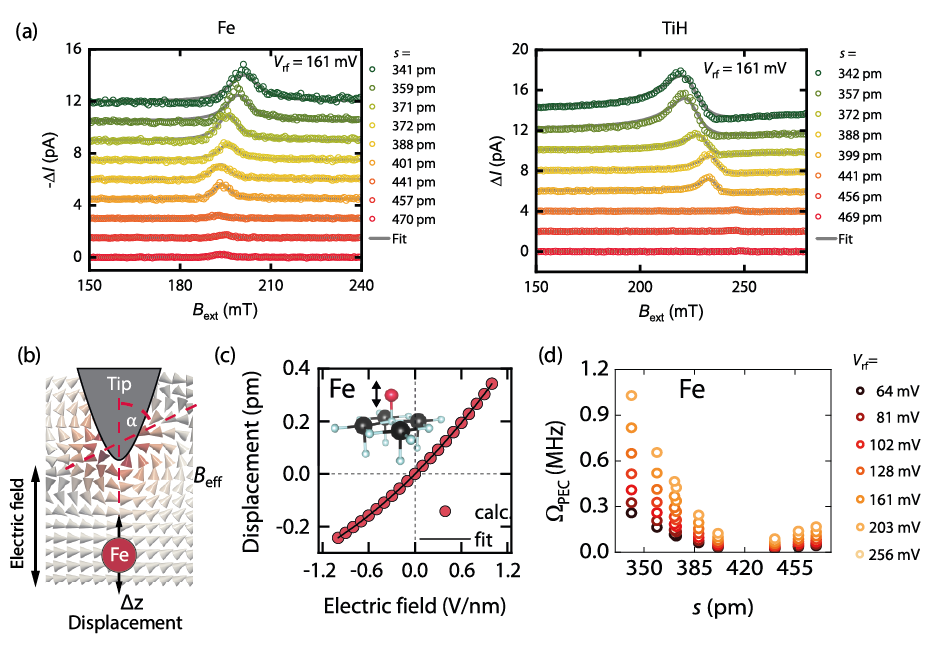Revealing the mechanism driving magnetic resonance in STM

The central idea of EPR is that radiofrequency (rf) photons excite unpaired electrons to a higher-energy spin state, which can be probed experimentally. However, the direct excitation of the EPR species by the magnetic field components of the rf tunneling current is estimated to be negligible. Several EPR-STM excitation and detection mechanisms have been proposed, including modulation of the tunneling barrier by the rf electric field, breathing of the density of states mediated by spin-orbit coupling, spin torque due to tunneling electrons, and piezoelectric coupling of the rf electric field to the magnetic adatom. In the piezoelectric coupling mechanism, the oscillating electric field couples to the electric dipole of the EPR species and induces motions in the inhomogeneous magnetic field of the nearby magnetic STM tip leading to an effective oscillating magnetic field that drives the EPR transitions [1].
In our study [2], we compared the predictions of different EPR-STM models with an extensive EPR data set obtained for different tip-sample distances and strength of the oscillating electric field, effectively sampling the magnetic field gradient originating from the STM tip, see Figure (a). By calculating the displacement of the adatoms due to the electric field between tip and substrate (Figure b,c), we were able to estimate the Rabi rate of the EPR transitions (Figure (d), which we found in good agreement with the experiments. Our work supports quantitatively the piezoelectric coupling mechanism between tip and EPR species [1] and rules out a series of other mechanisms. Moreover, our model of the excitation process includes the precise orbital and spin degrees of freedom of the adatoms and revealed that Fe and TiH are driven by the longitudinal and transverse component of the oscillating magnetic field gradient, respectively. This finding has strong implications for the ability to drive and measure EPR in different EPR species on surfaces. Our model further predicts non-linear driving forces due to non-linearities in the relation between the electric field and the resulting displacements, which are very specific to the adatom species.
Reference
[1] J.L. Lado, A. Ferron, J. Fernandez-Rossier, Exchange mechanism for electron paramagnetic resonance of individual adatoms, Physical Review B, 96, 205420 (2017).
[2] T.S. Seifert, S. Kovarik, D.M. Juraschek, N.A. Spaldin, P. Gambardella, and S. Stepanow, Longitudinal and transverse electron paramagnetic resonance in a scanning tunneling microscope, Science Advances, 6, eabc5511 (2020). article
Download (PDF, 7.3 MB)